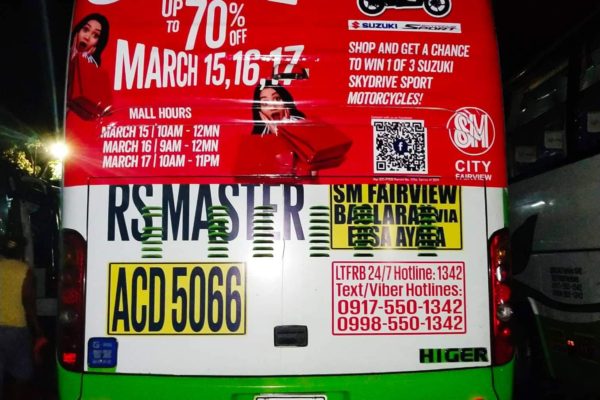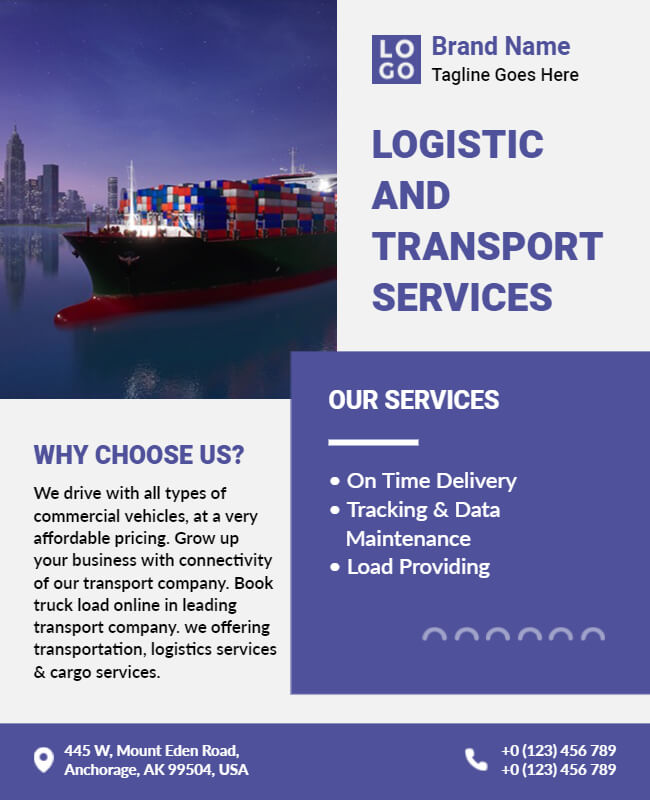Reliable Transit Advertising Philippines to Grow Your Audience
Reliable Transit Advertising Philippines to Grow Your Audience
Blog Article
Understanding the Function of Transit Advertising And Marketing in Enhancing Brand Visibility and Customer Engagement
Transportation advertising and marketing has become a pivotal component in the advertising and marketing landscape, using one-of-a-kind opportunities for brands to raise their presence and engage customers properly. With the capacity to reach a diverse and captive audience during their daily commutes, these advertising techniques are not simply regarding visibility; they are concerning creating meaningful links with possible consumers. As we discover the diverse benefits and ingenious strategies within transportation advertising and marketing, it ends up being necessary to consider just how these aspects jointly affect customer perception and actions, questioning regarding their lasting effect on brand loyalty.
Interpretation of Transportation Advertising
Transit advertising and marketing describes the method of promoting items, solutions, or brands with ads put in and around public transportation systems. This kind of advertising and marketing includes a variety of positionings, including posters on trains and buses, digital displays at transit stations, and covers on the outside of cars. It aims to get to a diverse audience, taking advantage of the high foot traffic connected with public transit.
Transit marketing is strategically placed to record the focus of commuters, that commonly spend substantial time waiting or traveling. By incorporating promotions into the everyday routines of individuals, brand names can create a long-term impact and foster brand name acknowledgment. The tool is especially reliable in urban atmospheres, where public transport is a key mode of traveling.
Additionally, transportation advertising and marketing can assist in local targeting, enabling companies to reach certain demographics based on transportation courses and station locations. As metropolitan populations grow and making use of public transportation boosts, this advertising and marketing technique has acquired prestige as a vital element of integrated advertising and marketing strategies. The dynamic nature of transportation marketing, combined with its ability to involve consumers in a captive environment, underscores its importance in modern advertising and marketing practices.
Benefits of Transit Marketing
The performance of transportation advertising hinges on its capacity to supply a wide variety of advantages to brand names looking for to enhance exposure and involvement. One of the primary advantages is the substantial reach it supplies; transportation ads can effectively target diverse demographics across metropolitan areas, getting to both travelers and pedestrians alike. This wide direct exposure considerably enhances brand name understanding.
An additional advantage is the high regularity of impressions. As transportation vehicles travel along established routes and stop at numerous areas, they develop recurring direct exposure that enhances brand name messages. This regularity promotes knowledge, which is important in consumer decision-making.
Transit marketing is likewise economical contrasted to various other media systems. Given its large reach and possibility for high impacts, brand names usually experience a reduced price per thousand perceptions (CPM), optimizing their advertising budget plan.
Additionally, transit ads can produce a sense of community link. By lining up with local transportation systems, brands can resonate with local audiences and foster a feeling of regional satisfaction. This local approach enhances brand name loyalty and involvement, making transportation marketing a compelling selection for organizations intending to strengthen their visibility in the marketplace.

Efficient Methods for Transit Projects
To optimize the effect of transportation campaigns, brands need to take advantage of strategic preparation and execution customized to their target audience. First, determining the demographic features of the audience making use of public transit is critical. This allows brand names to produce individualized messaging that resonates with prospective consumers.
Next, choosing the appropriate transit tools is crucial. Whether using bus covers, subway posters, or digital displays, each medium this contact form has one-of-a-kind advantages that can enhance visibility. For example, vivid visuals on bus wraps can stand out, while digital ads can be upgraded often to show prompt promos.
Furthermore, incorporating a natural branding strategy across transportation systems ensures consistency and enhances the brand name's identification. Making use of memorable taglines and appealing layouts will certainly enhance brand name recall among commuters.
By employing these strategies, brand names can properly harness the capacity of transit advertising, promoting better understanding and connection with their target audience. Eventually, a well-executed transit project can drive considerable growth in brand name exposure and consumer engagement.

Determining Impact and Engagement
In reviewing the performance of transit ad campaign, exact measurement of impact and engagement is crucial for brand names seeking to enhance their advertising and marketing approaches. Metrics such as reach, frequency, and impressions give foundational data to examine visibility. Evaluating these aspects helps establish exactly how many possible clients are revealed to the promotions throughout their day-to-day commutes.
Interaction can be more assessed through customer interactions, such as internet site traffic, social media states, and straight reactions to calls-to-action included in the ads. Utilizing devices like QR codes or special Links can assist in tracking of customer behavior straight linked to transit projects. Surveys and comments devices also function as valuable methods to collect qualitative data on customer understandings and recall of the advertisement.
In addition, advanced analytics and attribution models can associate transportation direct exposure with subsequent getting behavior, providing understandings right into the return on financial investment. By utilizing a detailed approach that combines quantitative and qualitative actions, brands can create a nuanced understanding of their transportation marketing effect. Inevitably, this data-driven approach enables brands to improve their projects, guaranteeing they resonate properly with target market and improve overall brand name exposure.
Situation Researches of Successful Campaigns
Successful transportation ad campaign act as compelling examples of exactly how efficient methods can raise brand name exposure and interaction. Transit Advertising Philippines. One noteworthy case is the "I Love New york city" project, which transformed the city's image and attracted millions of tourists. By making use of metro advertisements, signboards, important source and bus wraps, the campaign developed a solid, cohesive brand identification, causing a substantial uptick in tourism and local business patronage
An additional exemplary campaign is Coca-Cola's "Share a Coke" campaign, which leveraged transportation marketing to personalize the brand name experience. By including prominent names on marketing products throughout various transportation platforms, Coca-Cola fostered a deeper psychological connection with customers, encouraging them to share their experiences on social media.
Additionally, the "Got Milk?" campaign successfully used mass transit advertisements to reach a wide target market, reinforcing the message of the relevance of milk in a balanced diet. The project saw a measurable increase in milk intake in target demographics.
These study show that when carried out thoughtfully, transportation advertising can significantly boost brand presence, foster consumer involvement, and drive measurable outcomes, demonstrating its crucial function in contemporary advertising methods. - Transit Advertising Philippines
Final Thought
In verdict, transportation advertising serves as an important device for improving brand name presence and fostering customer engagement. Ultimately, the capability to determine engagement and analyze successful instance researches underscores the efficiency of transit marketing in driving brand commitment and consumer communications.
Transportation advertising and marketing has emerged as a pivotal component in the marketing landscape, using unique possibilities for Read More Here brands to boost their presence and engage customers efficiently.Additionally, transit advertising and marketing can promote local targeting, allowing businesses to get to certain demographics based on transportation paths and station places.In assessing the effectiveness of transportation marketing campaigns, exact measurement of influence and involvement is crucial for brands seeking to maximize their advertising strategies.Effective transit marketing campaigns offer as compelling instances of how reliable techniques can boost brand presence and interaction.In conclusion, transportation advertising offers as a vital device for enhancing brand visibility and fostering customer engagement.
Report this page